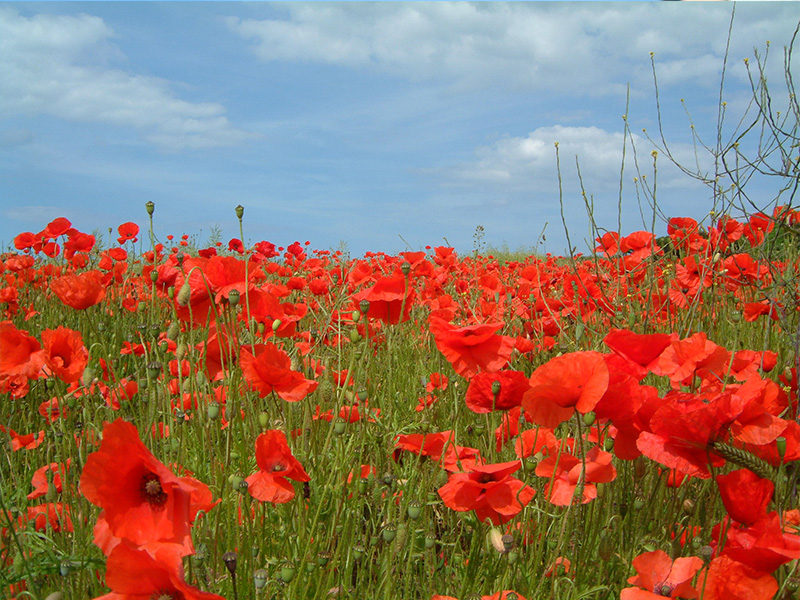For Canadians, the Jewish and Gregorian calendars resonate together in early November. The leaves turn and fall, leaving bare branches that point to the dead of winter ahead. Past the flush of Jewish festivals, of zman simchateinu, the time of our joy, is the Hebrew month so devoid of celebration that we call it Mar Cheshvan, bitter Cheshvan. We engage with Holocaust Education Week, as poppies pinned to our lapels mark the sacrifice of fallen soldiers in both great wars. Kristallnacht – or the November Pogrom – is followed immediately by Remembrance Day. It is the season of sober remembrance.
Although the red poppy of remembrance is ubiquitous, it is an odd symbol with contradictory associations – memory and forgetting, death and redemption. The practice of wearing the poppy derives, of course, from the wartime poem In Flanders Fields, composed in 1915 by Maj. John McCrae, a Canadian doctor from Guelph, for the funeral of a fellow soldier.
The poem begins in nature, famously observing, “In Flanders fields the poppies blow.” The pitched battle in Flanders so ravaged the soil that little but the hardy poppy could grow. The red poppies proliferating there symbolize both the blood of fallen soldiers and the regeneration of life in a wasteland. They link up with an older Christian use of the poppy as an emblem for the bleeding wounds, death and resurrection of Jesus, and also with the sleep-inducing, memory-erasing death-like properties of opium, sourced from poppies. The poet Paul Celan, a survivor of Auschwitz, evokes these contradictory meanings in the title of his 1952 collections of poems, Mohn und Gedächtnis, or Poppy and Remembrance.
I thought of this odd conflation of memory and forgetting when my husband and I visited the beaches of northern France last June, the week of D-Day. Even on a balmy spring morning, the conditions were harsh, and we imagined the treacherous Normandy landing of the Allied troops in the 1944 invasion, whose staggering losses were a given.
After Juno and Omaha beaches, we visited the Canadian and U.S. military cemeteries. At the U.S. cemetery, we saw seemingly infinite rows of white crosses. The side facing forward, toward the cemetery entrance, was blank. Inscribed on the back of each cross was the name of the dead and a few other details. The uniformity in death mirrored the uniformity of the military uniform when alive. Individuals lost their lives, but in death they were remembered as a unit, defending shared goals, ideals and values. Scattered among the crosses, barely discernible visually, were markers bearing a Magen David, perched upon what served for the other graves as the vertical post of the cross.
In the Canadian cemetery, graves were marked by traditional arc-shaped white gravestones, each inscribed with the name of the soldier and other details. There was a space in which – for most graves – was etched a cross. A small number of gravestones had a Magen David instead, and an even smaller number, simply a blank space.
The American and the Canadian cemeteries based these religious designations on the identity tags of the fallen soldiers. In the American cemetery, the default designation was Christian. Only if a soldier’s dog tags explicitly identified him as Jewish would he be buried under a Magen David. Our guide noted that many Jewish soldiers were buried beneath the sign of the cross. Often, soldiers did not indicate their religion on their dog tags, in case of capture by Nazi forces. “In Flanders fields the poppies blow/ Between the crosses, row on row.” In the Canadian cemetery, by contrast, when the religion of the fallen soldier was not specified, the space on the gravestone was left blank.
Without conferring, my husband and I began placing small stones on the Jewish graves. In each cemetery, we walked between rows of grave markers, bringing Jewish ritual to the final resting place of known Jewish soldiers, far from the home and family they died defending.
